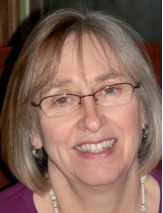The weekly Market On the Green in New London has started again. There’s a good mix of fresh garden produce and hand made craft items. We are vendors of notecards and drawings and paintings, and this is the view from our tent. All the art and craft items must be made by the vendors themselves. If not, it would just be a flea market. We enjoy meeting people and hearing their stories.
Yesterday it poured down rain. But when the closing bell rang from the nearby church steeple, the sun came cheerfully out. Instantly.
The building in the right background with the bell tower holds the town offices. It was originally a school and never a church, although it does resemble one.
Stop by between 3 and 6 on Wednesdays from now through early September. We’d love to see you.
The pancakes were delicious.
I returned to the town of Lisbon to redraw a scene for my Draw-NH project. We artists are a picky bunch. The yellow building is now housing for seniors. The shop behind the green awning sells art supplies. Surprisingly, I didn’t stop in. The view through the ornate wooden porch nicely frames the yellow wooden one and the brick block, 1907.
Lisbon, with a population under 1600, has a lilac festival in May. The main street sports lilac flags from every lamp post.
After the names of Concord, Chiswick, and Gunthwaite didn’t stick, it was named Lisbon in 1824 after the governor’s friend who was a consul in Portugal.
Early industries included charcoal manufacturing, mining, and mills along the Ammonoosuc River. Other facts from the town website: the Parker Young factory was once the world’s largest manufacturer of piano sounding boards. And on a divergent note, New Hampshire’s first ski tow was here.
The Silsby Free Public Library and the town offices make a handsome pair of brick buildings on Main Street in Charlestown, NH. Charlestown sits along the banks of the Connecticut River, bordering the state of Vermont. In 1781, Charlestown briefly declared itself to be part of Vermont due to friction with the New Hampshire state capital of Concord. The records show that George Washington insisted that the town return its allegiance to NH in 1783.
The main street is lined with fine examples of architecture worth preserving. Sixty-three buildings are listed in the National Register of Historic Places. I had a very nice stroll along this street while deciding which building to draw. And a picnic lunch on a bench.
The historical society in Dorchester, NH was closed the day I was in town. But I liked the classical simple design of the former school house. It is constructed with painted red clapboards.
This small town is named for Dorchester, England. At a population of under 400, it is half of what it was at one time. Its former industries were sawmills, shingles and clapboards, and the production of charcoal.
Many towns in New England lost half their population in the mid to late 1800s due to westward migration after soldiers returned from the Civil War.
Franconia, NH is all about the White Mountains. The poet Robert Frost and his family awoke to this panoramic vista each morning from 1915 to 1920. For twenty more years, they returned for summers. The mail box in rusting tin is labeled “R. Frost”, and the peeling black letters are in his hand. I remember tracing the letters with my finger when I was there as a young child.
The simple farm house is now a center for poetry simply called the Frost Place. Nature trails through the woods are dotted with plaques of his poetry.
The Colby Chaise, circa 1825, was owned by New Hampshire’s governor Anthony Colby (1792-1873). It is a wonderful addition to the collection of the New London Historical Society. Although it is housed in their large, impressive transportation building, I imagined it outdoors near Mount Kearsarge.
When printed as a note card, this is one of the very few images that winds its way around to the back side of the card.
The carriage was restored in 1937 in Dearborn, Michigan.
The Studebaker Junior is a deluxe wagon made for children by the Studebaker Company in South Bend, Indiana. It was probably intended to be pulled by a goat or an animal of similar size. I tried to imagine the day it was new. Perhaps Christmas morning? With or without goat?
This small-scale wooden vehicle is in the transportation building in the New London Historical Society Collection, in New London, NH. It is about three feet (one meter) high.
The Studebaker company made top line wagons for farmers, miners, and soldiers for sixty years. And carriages for wealthy people. Then for another fifty years, they made horseless carriages, or automobiles. The company went out of business in the 1960s, but Studebaker fan clubs do still exist.
And then tonight I said to my husband, “Wait a minute. We have a photo of you, posing in a goat pulled wagon, back when you were four years old. I wonder if it might have been a Studebaker Junior?” Comparing the pictures, I now feel sure that it is.
He really wasn’t a wealthy child who had a goat pulling him around. This was just a photo op near the corner of Beech Street and Trapelo Road in Belmont, a suburb of Boston. A traveling photographer was taking pictures on the sidewalk—not something you’d encounter every day. His best childhood friend from across the street also has a similar picture in his archives, and both pictures have shown up on Facebook.
My Adventures In Learning class is coming up in July. This two hour, four session class will take place on the Colby-Sawyer College campus here in New London, NH. We will be doing on location (outdoors) drawing, and many of the students will be using colored pencils.















